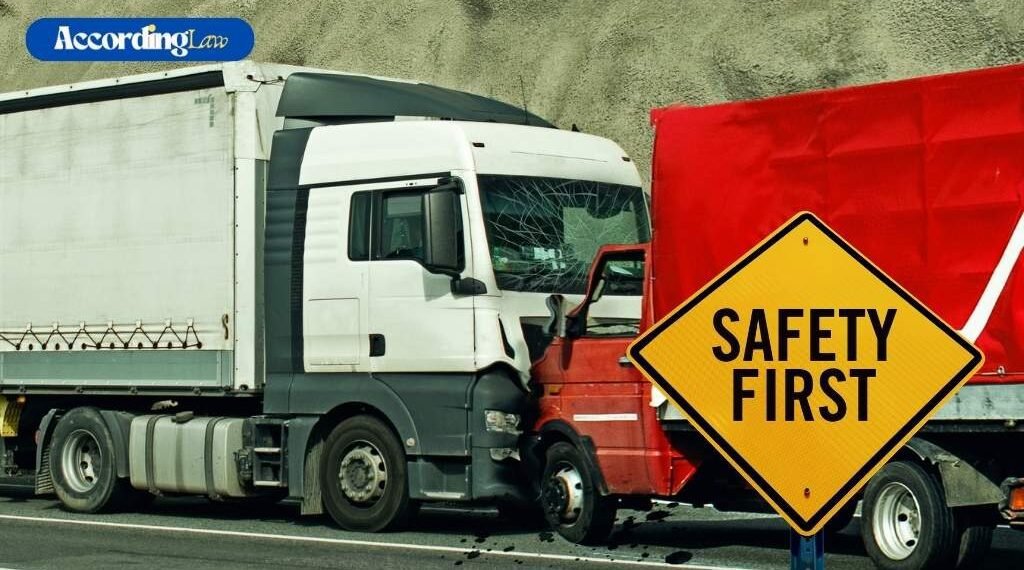Table of Contents
Key Takeaways
Why Truck Accident Safety Matters
Commercial truck accidents remain one of the most serious threats on American highways, often leading to catastrophic injuries, fatalities, and extensive property damage. According to data from the National Highway Traffic Safety Administration (NHTSA), in 2021 alone, there were over 4,700 fatal crashes involving large trucks in the United States, highlighting the critical need for robust safety solutions. These accidents have profound long-term consequences for victims, families, and society, from medical expenses and lost wages to increased insurance costs and public infrastructure strain.
Given the significant impact that a truck accident can have, individuals and businesses involved in trucking should understand both legal rights and safety responsibilities. For victims, consulting a Los Angeles truck accident lawyer can be vital to navigating recovery and compensation following a tragic incident. While technology advances rapidly, human vigilance and legal expertise ensure that all avenues for accident prevention and accountability are explored.
The Role of Federal Regulations in Truck Safety
Federal regulations, enforced by agencies like the Federal Motor Carrier Safety Administration (FMCSA), establish the minimum safety requirements for commercial truck operation. These regulations mandate regular vehicle inspections, outline rules for cargo securement, set strict limits on driver hours (to prevent fatigue), and require commercial driver’s licenses (CDLs) with specific training and background checks. Government oversight ensures trucking companies and drivers adhere to best practices, significantly reducing risk. Compliance protects drivers and public safety and minimizes legal liability for companies operating large fleets.
Innovative Safety Technologies Transforming the Industry
The trucking industry is experiencing a technological revolution, with innovations such as automatic emergency braking (AEB), lane departure warning systems, blind-spot detection, and advanced dash cams now widely available. These devices use sensors, cameras, and real-time data to help drivers avoid collisions and respond more quickly to hazards. Initial statistics show impressive results; for instance, a study by the Insurance Institute for Highway Safety (IIHS) found that trucks equipped with forward-collision warning and AEB had significantly lower crash rates. These advancements are not just preventing major accidents, they’re saving lives and setting new standards for safety moving forward.
For those interested in broader advances, The New York Times has explored how auto safety technology is reshaping industries globally, underlining the trucking sector as a critical target for innovation.
Reducing Human Error: Training and Fatigue Management
Human error remains a significant cause of truck accidents despite the influx of technology. Comprehensive driver training programs are essential, teaching driving skills, defensive driving, hazard perception, emergency maneuvering, and cutting-edge safety technology. Trucking companies invest in continuous learning and simulation-based training to keep skills sharp.
Fatigue and distraction are persistent issues in the industry. Effective fatigue management strategies now include electronic logging devices (ELDs) to monitor hours behind the wheel, mandatory rest periods, and awareness campaigns designed to encourage healthier sleep habits for drivers. These combined efforts improve alertness, reduce accident risk, and make highways safer.
How Data Shapes the Future of Truck Accident Prevention
The rise of big data analytics has transformed efforts to predict and prevent truck accidents. Companies and regulators leverage data from onboard telematics systems, crash reports, and public agencies like the NHTSA Fatality Analysis Reporting System. By identifying patterns, such as high-risk routes, times of day, or driver behaviors—fleets can proactively address hazards and deploy safety interventions before incidents occur. Predictive analytics are shaping recruitment, training priorities, and even how safety technologies are deployed on fleets.
Recent Success Stories from Advanced Safety Technology
Trucking companies that have embraced advanced collision-avoidance systems are achieving notable success in reducing crashes and associated costs. According to a recent article on trucking safety technology, fleets outfitted with modern safety features report double-digit reductions in rear-end collisions and significant drops in liability claims. These case studies underscore the value of ongoing investment in fleet safety tech, not only for regulatory compliance and lower insurance premiums but also as a moral imperative to protect drivers and the public.
What Drivers and Fleets Can Do Right Now to Improve Safety
Truck drivers and fleet managers can adopt several best practices immediately to enhance safety. These include scheduling routine maintenance, enforcing rest breaks, investing in driver education, using the latest telematics and safety systems, and fostering an open culture around reporting hazards or close calls. Resources such as the American Trucking Associations provide industry professionals with additional safety guidelines, research, and advocacy tools.
Staying informed about evolving regulations and technology, participating in training, and partnering with reputable legal advisors are also practical steps that can help create a safer trucking environment.
Looking Ahead: The Future of Safe Trucking on American Highways
The future of trucking safety promises continued breakthroughs, from semi-autonomous vehicles and real-time driver monitoring to advances in vehicle-to-vehicle communication and artificial intelligence. As these innovations enter mainstream use, safety responsibility will increasingly span drivers, fleet operators, regulators, and the public. Ongoing education and public awareness campaigns will remain essential, ensuring everyone is committed to safe highways.
Innovative minds in technology and logistics and robust legal and regulatory frameworks will drive down accident rates, even as freight volumes and road traffic climb. The pathway to safer roads hinges on collaboration, vigilance, and the constant pursuit of new and better safety solutions.


